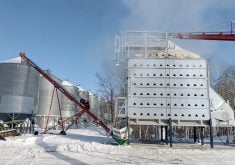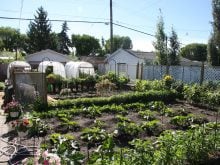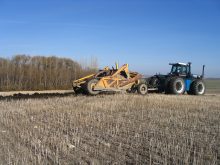Planting a mixture of forage species may increase productivity on tame pastures.
The concept of multiple species is not new but past trials were conducted in higher moisture areas, so researchers at Agriculture Canada’s Swift Current research centre decided to try forage mixes in a semi-arid environment. The results were mostly favourable but also showed advance planning is needed.
“The goal is to recreate a natural plant community that will give us a variety of different architectures with different kinds of roots and top growth,” said range and forage ecologist Mike Schellenberg.
Read Also

Russian wheat exports start to pick up the pace
Russia has had a slow start for its 2025-26 wheat export program, but the pace is starting to pick up and that is a bearish factor for prices.
“You need to know your environment and you need to understand the limitations of the site and select species that work in your system and will do what you want them to do,” he said at the recent Canadian Forage and Grasslands Association conference held in Calgary.
Monocultures support a smaller group of soil microbes but within a more complex mix there is enhanced biodiversity, more nitrogen fixation, fewer diseases, weed control, less soil erosion as well as increased soil infiltration leading to less flooding, leaching and runoff.
“Under each individual species in the complex there will be a unique microbial community. If you have a diverse stand you will have a more diverse microbial community,” he said.
A four-year polyculture study at Swift Current started with a 12 species mix that has gone into long-term rotation studies. Data is still coming in so they continue to evaluate positive and negative effects.
They wanted plants that already grow in the area and settled on a mix of cool season, warm season, legumes and brassicas like radishes, turnips and kale. The cool season crops performed better. Some crops like kale and sorghum did not thrive.
Schellenberg said there are native species that could work well and producers need to monitor the mixes to make sure they do not include noxious weeds.
The research site received eight millimetres of rain between April and August 2017. The mixture survived and provided soil cover with some forage production.
Other benefits included decreased insect damage for flea beetles in brassicas in mixtures versus monoculture.
The soil showed an increase in water stable aggregates over a four-year period despite removal of most of the residue during dry periods.
They are still learning how much residue is needed on the land and how a mixture affects the following crops. Residues may take a long time to decompose before nutrients like nitrogen are available to subsequent crops.
Overall, the mixtures had higher biomass production than most monocultures but ultimately a perennial forage mix might offer more once established.
“If you are going to be doing this repeatedly on the same piece of land, you might be better off bypassing the annual option,” he said.















